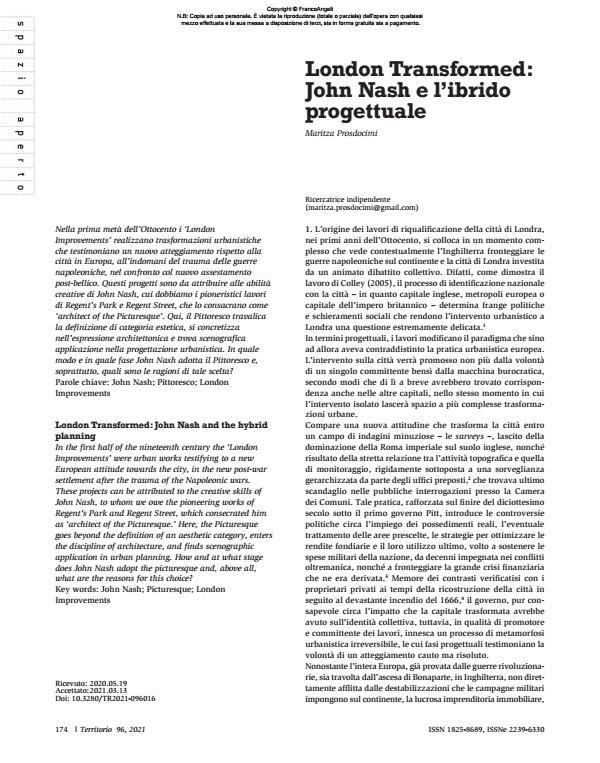London Transformed: John Nash e l’ibrido progettuale
Titolo Rivista TERRITORIO
Autori/Curatori Maritza Prosdocimi
Anno di pubblicazione 2021 Fascicolo 2021/96
Lingua Italiano Numero pagine 16 P. 174-189 Dimensione file 1493 KB
DOI 10.3280/TR2021-096016
Il DOI è il codice a barre della proprietà intellettuale: per saperne di più
clicca qui
Qui sotto puoi vedere in anteprima la prima pagina di questo articolo.
Se questo articolo ti interessa, lo puoi acquistare (e scaricare in formato pdf) seguendo le facili indicazioni per acquistare il download credit. Acquista Download Credits per scaricare questo Articolo in formato PDF

FrancoAngeli è membro della Publishers International Linking Association, Inc (PILA)associazione indipendente e non profit per facilitare (attraverso i servizi tecnologici implementati da CrossRef.org) l’accesso degli studiosi ai contenuti digitali nelle pubblicazioni professionali e scientifiche
Nella prima metà dell’Ottocento i ‘London Improvements’ realizzano trasformazioni urbanistiche che testimoniano un nuovo atteggiamento rispetto alla città in Europa, all’indomani del trauma delle guerre napoleoniche, nel confronto col nuovo assestamento post-bellico. Questi progetti sono da attribuire alle abilità creative di John Nash, cui dobbiamo i pioneristici lavori di Regent’s Park e Regent Street, che lo consacrano come ‘architect of the Picturesque’. Qui, il Pittoresco travalica la definizione di categoria estetica, si concretizza nell’espressione architettonica e trova scenografica applicazione nella progettazione urbanistica. In quale modo e in quale fase John Nash adotta il Pittoresco e, soprattutto, quali sono le ragioni di tale scelta?
Parole chiave:John Nash; Pittoresco; London Improvements
Maritza Prosdocimi, London Transformed: John Nash e l’ibrido progettuale in "TERRITORIO" 96/2021, pp 174-189, DOI: 10.3280/TR2021-096016